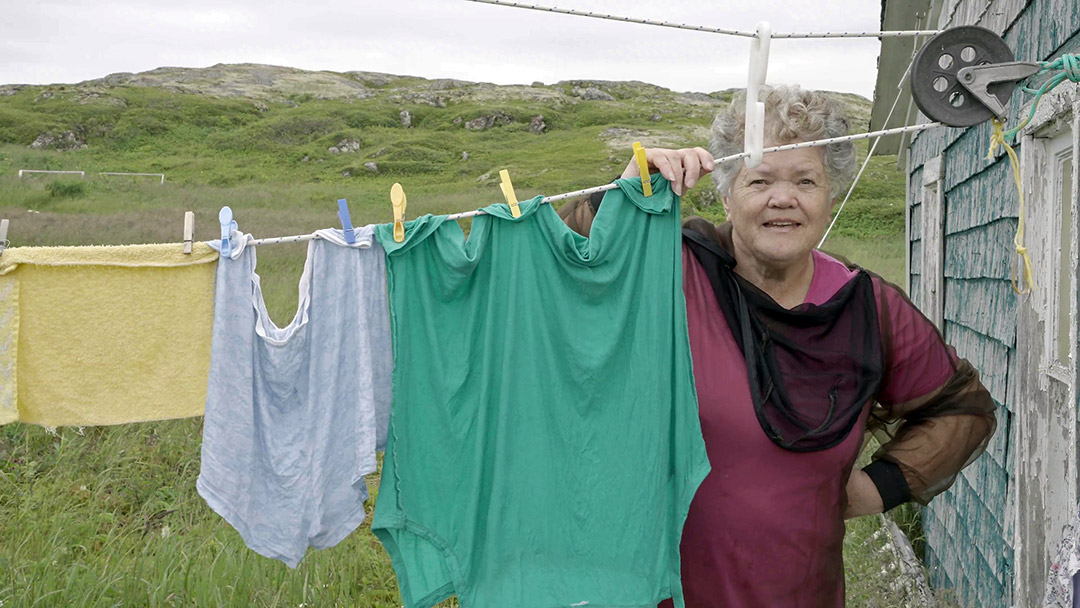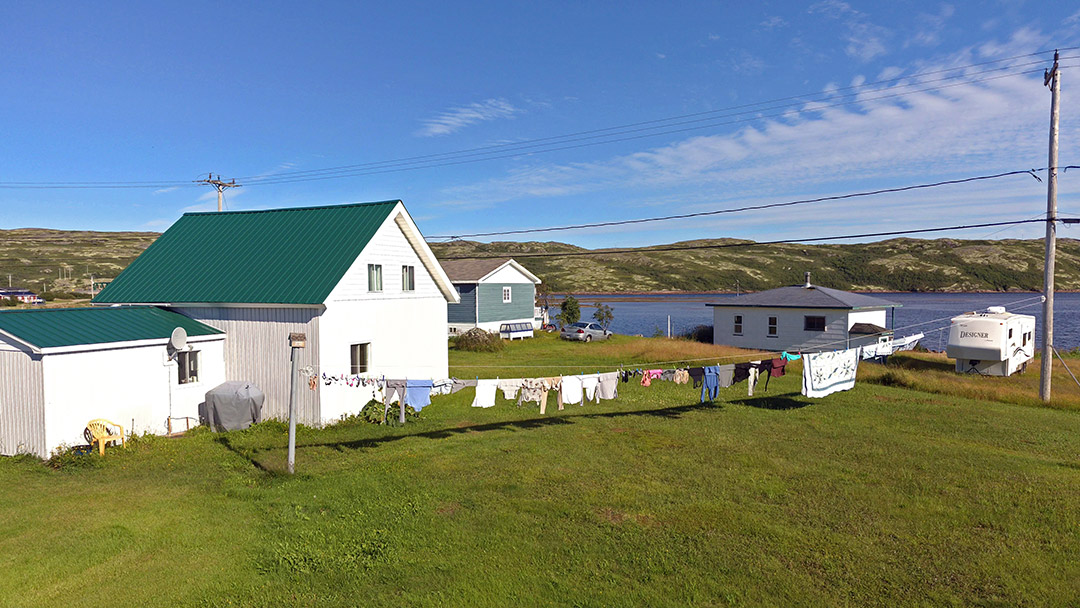
In the late nineteenth century, American author Winfrid Alden Stearns visited several islands in the vicinity of St. Paul's River during the fishing season. “The men fish,” he observed in his book Labrador, while “the women stay at home mostly and keep things in order there; cooking the meals … simple fare: bread with or without butter (some use lard for butter), rarely a piece of pork, and tea of the usual kind called black or breakfast. The main stand-by is either codfish or herring with an occasional mackerel; while the red berry and baked apple [bakeapple, or cloudberry] form excellent preserves.”
For generations, women from St. Paul's River continued to follow much the same routine in their summer homes that they followed in their winter houses. Girls began to assist with household chores when they were seven or so.

“Monday was wash day,” Valerie Keats Conway recalls. “Everybody had clothes out [on the line] on Monday.” Women washed laundry by hand in a galvanized tub filled with water heated on a woodstove. They scrubbed it on a washboard.
“Tuesday was making bread day and ironing.” Ironers had to warm up their flat iron on a woodstove, taking care not to overheat it and scorch their clothing.
“Wednesday was cleanup day. We had to get down on our hands and knees and scrub the floors with a scrubbing brush. The floors weren't painted or anything.
“Thursday was wash day again. They did their washing twice a week.
“And I'd say they made bread about three times a week. Bread was one of the main things to eat, I think.
“Friday was cleaning again.”
Women also cooked every day, including Saturday and Sunday. But on the Lord's Day, they attended whatever church services were offered and had time to relax and visit their neighbours.
In addition to household chores, girls and women from St. Paul's River traditionally helped to process and cure cod, and they picked berries in season.
Today, women of working age usually seek employment in the local fish plant, the school, the clinic, the inn, the general stores, the municipal offices, or the Coasters' Association. But some longtime domestic traditions persist. You can still smell freshly baked bread in various kitchens and see laundry strung on clotheslines at summer places and in the village itself.

Between 1919 and 1968, the Clarke Steamship Company held a federal government contract to run a fortnightly service on the Lower North Shore, carrying passengers, mail, and freight to the region from break-up to freeze-up.
Although company vessels brought flour, molasses, salt, salt pork, tea, and other such goods, they rarely brought fresh produce. Thus, fresh fruit was a particular treat for the residents of communities like St. Paul's River.
One summer in the mid-1960s, Francie Nadeau Keats decided to take advantage of oranges her father had bought to bake a special dessert for her family. You can hear an account of her culinary experiment in this short video.